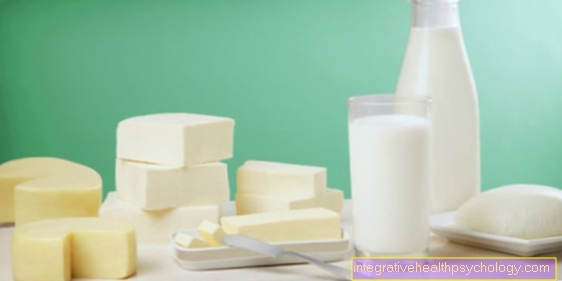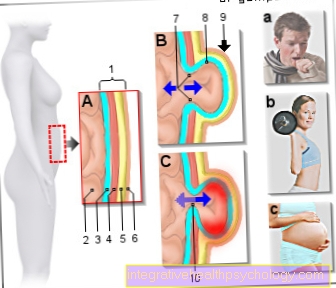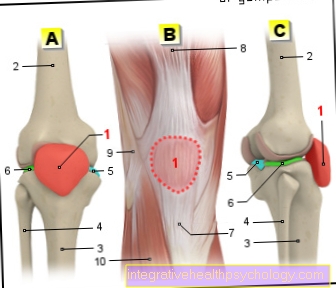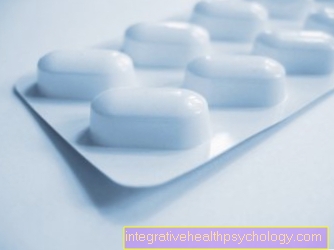Protein-containing foods
introduction
Protein is a basic building block of all living cells. Protein is an essential part of a balanced diet.
The body cannot synthesize protein on its own, so intake through food is essential. Protein occurs naturally in numerous animal and vegetable foods. How much protein is required by the body depends on many factors. These include age, gender and constitution.

Which foods contain how much protein?
Protein is more or less present in almost all foods. The occurrence of protein is not limited to a specific food group but can be found in all groups. A list is given below for your convenience. This is divided into 5 groups: plants, dairy products and eggs, meat, fish and food supplements. The protein content per 100g of food is given.
Vegetable proteins:
- Spirulina (dried): 59.8g
- Sweet lupins: 33.1g
- Tempeh: 19.0g
- Natto: 17.7g
- Tofu: 8.1g
- Bean sprouts: 5.5g
- King oyster mushrooms: 4.4g
- Brussels sprouts: 4.0g
- Porcini mushroom: 3.6
- Chives: 3.0g
- Broccoli: 3.0g
- Spinach: 2.7g
- Rocket: 2.6g
- Artichoke: 2.4g
- Cauliflower: 2.4g
- Swiss chard: 2.1g
- Mushrooms: 2.1g
Dairy products and eggs
- Harz cheese: 30.0g
- Camembert: 24.3g
- Mozzarella: 19.0g
- Quark: 13.5g
- Cream cheese: 13.4g
- Cottage cheese: 12.6g
- Egg white: 10.5g
- Milk: 3.5g
- Buttermilk: 3.2g
flesh
- Partridge: 35.0g
- Pork knuckle: 25.6g
- Turkey breast: 24.6g
- Rabbit: 24.3g
- Turkey: 24.0g
- Deer: 23.1g
- Veal steak: 22.8g
- Leg of beef: 22.6g
- Roast beef: 22.5g
- Bouquet: 22.4g
- Lamb: 21.8g
- Ground beef: 21.4g
- Chicken: 18.8g
fish
- Anchovies: 28.9g
- Anchovies: 26.4g
- Caviar: 26.1g
- Tuna: 25.6g
- Wild salmon: 25.0g
- Halibut: 20.6g
- Sardine: 20.4g
- Swordfish: 19.7g
- Redfish: 19.4g
- Lobster: 18.8g
- Crabs: 18.6g
- Sea bream: 18.4g
- Herring: 18.0g
- Squid: 16.0g
- Prawns: 11.4g
Food supplements
- Protein powder: 70.0-90.0g (depending on the manufacturer)
- Protein bar: 20.0-50.0g (depending on the manufacturer)
Read more on the topic: Protein bar
Vegan protein foods
Since proteins are found in almost all foods, they are also found in countless plant-based products, so that a protein-rich diet is no problem for vegans either. Vegans can achieve good biological protein values by combining different foods. Basically, the rule of thumb should be to use one food from the following three groups in a meal:
-
Seeds and nuts
-
Legumes and soy products
-
Rice, cereals and pseudograins
Many vegans automatically cover their daily protein needs due to these numerous sources of protein. The amino acids they contain are responsible for the quality of the various proteins, there are 22 in total. The body can produce 13 of these itself, the remaining 9 must be taken in with food.
Vegetable proteins, which are the main source of protein for vegans, have a decisive advantage, they belong to the so-called complete proteins. This means that vegetable proteins contain all 9 essential amino acids. These are all those amino acids that cannot be produced by the body on its own and therefore have to be supplied through food. Complete proteins include, for example, quinoa, soy products, chia seeds and buckwheat.
Vegetable protein foods
As can already be seen in the above list, numerous plant-based foods are also very rich in protein. Different groups can be distinguished within plant foods:
Legumes, representatives are for example
- Peanuts 25g
- Lentils 12g
- Chickpeas 9g
- ofu 8.1g
Nuts, front runners are here
- Almonds 22g
- Sunflower seeds 20g
- Pumpkin seeds 19g
- Cashew nuts 17g
Vegetables are above all
- Kale and Brussels sprouts 4g
- Broccoli 3.0g
- Spinach 2.7g
Cereals and pseudo-cereals with
- Oats 12.5g
- Rye 9.0g
- Rice 2.4g depending on the variety
- Quinoa 4.4g
Also read: High protein diet
Protein-containing foods without fat
Apart from dietary supplements, there are no foods that do not have a proportion of fat in addition to protein. However, the fat content of many protein-rich foods is so low that hardly any attention needs to be paid to it. The following list now includes protein-rich foods with a very low fat content of up to 0.5g per 100g. (Protein in g / fat in g per 100g):
-
Albumen 85 / 0.2
-
Mushrooms 72 / 0.2
-
Cream cheese 71 / 0.2
-
Skyr 69 / 0.2
-
Swiss chard 42 / 0.2
-
Low-fat quark 72 / 0.3
-
Milk 40 / 0.3
-
Cauliflower 34 / 0.3
-
Brussels sprouts 32 / 0.3
-
Spinach 50 / 0.4
-
Broccoli 33 / 0.4
-
Peas 25 / 0.4
-
Harz cheese 96 / 0.5
-
Kidney beans 30 / 0.5
You might also be interested in: How high is the protein content in the egg?
Who should eat a high protein diet?
The question of who should eat a high protein diet is easy to answer: everyone!
Proteins are essential for our body, as they are involved in many metabolic processes and processes in our body. The key factor here are the amino acids contained in protein, which have numerous functions and effects in the body. They serve, for example, as building materials for many bones and tissues, as a means of transport for enzymes and as part of hormones and antibodies.
A protein-rich diet is known, especially in the sporting sector, to quickly gain muscle mass and for more energy during training. A protein-heavy diet also plays an important role in numerous weight-loss trends. The fact is that proteins have many advantages and also contribute to the general health of our body. In the western nations, an undersupply of protein is extremely rare, since protein occurs naturally in almost all foods, as already mentioned. People with previous illnesses such as anorexia, bulimia or people with kidney damage are particularly at risk. In general, everyone should make sure that they get enough protein through their diet.
You might also be interested in this: The protein deficiency
How is the protein requirement?
The dosage or the individual need for protein depends on numerous factors. These include age, state of health and other external life influences such as personal fitness level and addictive behavior. For a normally healthy person, the daily intake of protein should look like this:
-
In the first year of life: 2.5-1.3g protein per kg body weight
-
Children and adolescents: 0.9-1.0 / kg
-
Adults between 19 and 65: 0.8 g / kg body weight
In numbers, that's about 57-67g of protein per day for an adult. As you can see, the protein requirement initially decreases steadily as you grow older. From the age of 65, however, the protein requirement increases again slightly to 1.0g / kg. Proteins are so important for the body because they are made up of amino acids. Proteins are a basic component of many cells and control numerous important processes in the human body. A combination of different proteins with 2/3 vegetable and 1/3 animal proteins is recommended so that the protein requirement is adequately covered.
It is the combination of proteins that makes them so valuable. The so-called biological value of the proteins also plays a special role. It indicates how many of the amino acids the body can produce from the respective protein. An example of this is the egg, which has a biological value of 100. In comparison, 500g potatoes have a biological value of 98. If you now combine the egg with the potatoes, a value of 136 is achieved. It is therefore important to combine different proteins in a meaningful way.
This article might also interest you:
- Wholesome nutrition
- Dosage of protein





























